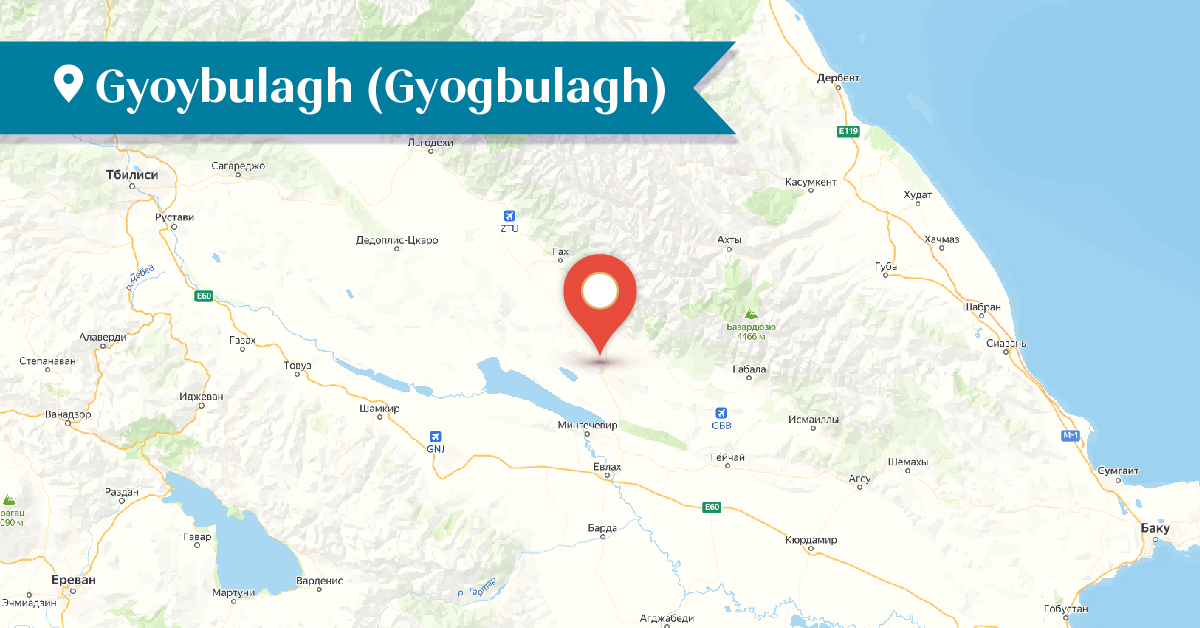2025
2025
2024-11-18

Gyoybulagh (or Gyogbulagh) was one of the former Armenian-inhabited villages in the Shaki district, located 27 km south of the city of Shaki. In the mid-18th century, the village was subjected to persecution by Haji Chalabi Khan of Shaki and subsequently abandoned.
At the end of the 18th century, following the devastating campaigns of Agha Mohammad Khan of Iran, the village was repopulated by Armenians who migrated from the Khachen and Jraberd provinces of Artsakh.
By 1874, the village was entirely Armenian-inhabited, with a population of 1,223. In 1886, the population was 1,206. During the visit of the Bishop Makar Barkhutaryants in 1888, the village had 184 houses, all inhabited by Armenians. As of 1914, Gyoybulagh remained entirely Armenian-populated, with 1,489 residents.
The population of the village was massacred in 1918 by the invading Turkish troops and Musavat forces, leading to its complete depopulation of Armenians.
At the center of the village stood the Holy Mother of God Church, which has not been preserved. During the visit of monument specialist Samvel Karapetyan, the Armenian cemetery of the village, with 19th-20th century tombstones, was still intact.
In a nearby ravine, there was a semi-ruined chapel, known as "Yeghishe Apostle", a name shared by many similar sacred sites. Surrounding the chapel was an old Armenian cemetery with rough-hewn tombstones.
Today, the village is still called Gyoybulagh but is inhabited by Azerbaijanis.
Bibliography
Barkhutaryants M., Land of Aghvank and its Neighbors: Artsakh, Yerevan, 1999.
Karapetyan S., The Armenian Lapidary Inscriptions of Aghvank Proper, Yerevan, 1997.